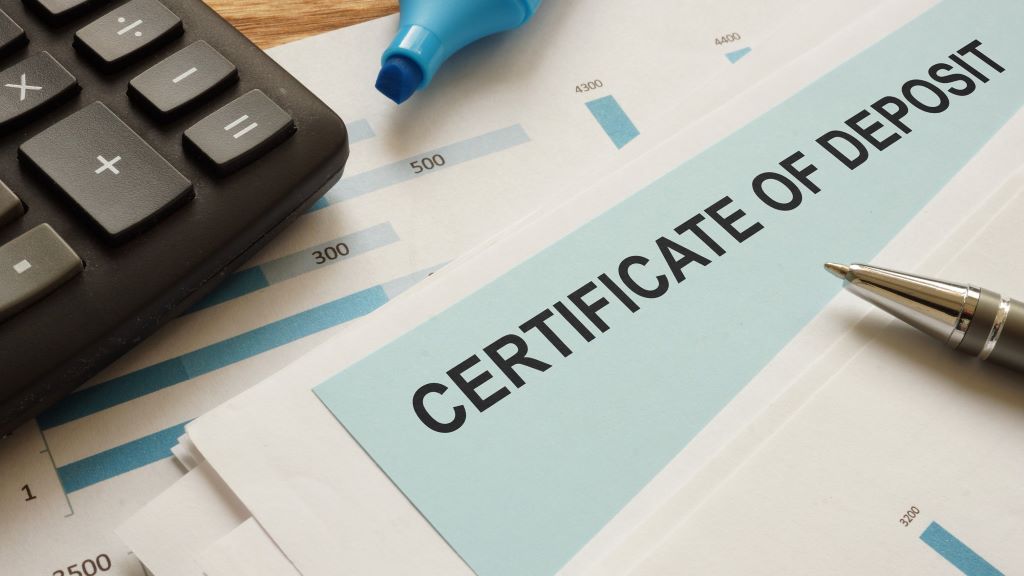You can find anything online today, from soup to nuts to certificates of deposit. But purchasing online can carry risk, especially when the purchase involves a financial product.
It can be a risky endeavor because your identity and banking information are exposed when you invest, and you’re spending more money than you would on other products.
In addition, you might find yourself at websites you’re not sure are 100% safe. You might have trouble vetting a product that’s sold online to make sure it’s legitimate. And you’ll naturally wonder if you can trust the individual on the other end of the transaction.
Certificates of deposit are a popular investment
Many people search for certificates of deposit (CDs) online, since they’re a popular way to save money. You put money into a CD for a fixed period of time and, in return, receive interest on the CD. Interest rates are not enormous but they’re more than a standard savings account provides.
It seems like a simple enough way to build up savings. And it’s considered to be a safe investment. If you buy a CD through a federally insured bank, the CD is automatically insured (along with your other assets at the bank) for up to $250,000.
But what about purchasing a certificate of deposit online? Is it safe?
A cautionary tale
In late 2021, the Securities and Exchange Commission won a default judgment against Denis Sotnikov for selling fake certificates of deposit online. The default judgment was issued by the courts because Sotnikov failed to respond to the SEC’s complaint.
In the complaint, the SEC said Sotnikov and entities he controlled created false online advertisements that offered CDs with higher-than-average rates of return.
Investors searching online for “best CD rates” and “highest CD rates” would see Sotnikov’s ads at the top of the search results page. (The two leading search engines, according to the SEC, served up the results. Presumably they’re referring to Google and Bing.)
When investors clicked on the advertisements, they were taken to “spoofed” financial websites created by Sotnikov. Spoofing is the act of making false communications appear to be from a source that’s known and trusted.
Sotnikov’s spoofed websites displayed the logos of real financial firms. The spoofed sites used domain names that were very similar to those of real firms, making it easy for investors to assume they were at the website of a known and trusted company.
The spoofed websites falsely claimed to be members of the FDIC, FINRA, SIPC, or the New York Stock Exchange. They had the audacity to steal the FDIC and FINRA member identification numbers of real firms and post them on their own websites.
The phony websites provided a telephone number for investors to call. When they called, the person answering would lie and say they represented a real financial firm. They’d often impersonate an actual employee of the real firm, co-opting the employee’s name and FINRA CRD number.
Callers were asked to provide an email address, where details about the CD were sent. The emails contained applications for opening accounts through which CDs could be purchased. The applications asked investors for personally identifying information, such as their social security numbers. Alongside the application, the phony firms provided fake CD term sheets, false proof of FDIC coverage, a spoofed “statement of condition,” and a phony summary of the firm’s assets and liabilities.
Investors were asked to fund their accounts by wiring money to a “clearing partner,” according to the SEC’s complaint. The clearing partner was actually a fake company set up by Sotnikov to launder investor funds. Money that went to the clearing partner was transferred to foreign and domestic bank accounts that enriched Sotnikov and his cronies.
When investors realized they’d been duped, they reached out to the real financial firms for help. In some cases, the real firms were able to contact domain registrars and argue that their trademarks had been infringed. This helped shut down the phony websites.
Although the spoofed sites were only live for a few weeks at a time before they were taken down, they were able to steal $26 million from investors. Many of the investors were older and used their retirement savings to purchase the CDs.
How a fake seller of CDs hid his identity
Sotnikov and his cronies went to great lengths to hide their identities online. They used virtual private networks (VPNs) to conceal their digital footprints.
They used prepaid gift cards (often purchased from grocery stores) to pay for VPN, website, and call-answering services. They used prepaid gift cards to pay for domain names, state incorporation filings, and internet ads too. Prepaid gift cards are often preferred by scammers because they are easy to purchase and difficult to track.
Sotnikov used prepaid phones and encrypted communication products when he communicated. He drew up fake invoices to help explain large money transfers to banks.
How to spot a scammer selling fake CDs
Spoofed websites offering fake certificates of deposit often have certain characteristics that might give them away, according to the SEC.
One red flag is a website offering CD rates that are higher than the norm. That’s how Sotnikov was able to entice investors into clicking on his online advertisements.
In addition, CDs usually impose a penalty if you need to withdraw money before they mature. A fake seller of CDs might try to entice you by offering CDs with no early withdrawal penalties.
Beware of websites promoting only CDs and no other financial products, such as loans or brokerage accounts. If a high minimum deposit is required, that might also be a red flag.
You should be wary if you’re asked to wire money to a foreign account or to a domestic account with a different name than the firm selling the CD.
To appear legitimate, a spoofed website might advertise that its clearing partners are registered with the SEC. And it might claim it’s an FDIC member and its deposits are FDIC-insured.
It might sound funny but it’s also important to scrutinize the website for spelling and grammar errors. Spoofed websites are hastily prepared by scammers without a talented team of professionals supporting them. Also look for instances where investment terms are misused.
How to vet an online certificate of deposit
If you find an appealing CD rate online, run a search for the financial institution that’s advertising the CD. See if you can find the firm elsewhere online. Pay careful attention to the firm’s name when you search, because scammers will create corporate identities that closely track the names of trusted institutions.
Once you find the firm, call their phone number and tell them about the CD offer. They’ll be able to tell you if it’s legitimate.
Also conduct a map search of the address of the firm offering the CD or do a reverse lookup on their phone number. This will tell you if the address and phone are associated with a legitimate business.
The SEC maintains a list of fake companies that have tried to impersonate real financial firms. It’s not a complete list, but you can enter the name of a firm you’re considering investing with and see if it’s on the list. You can search the list here.
If a website claims its CDs are insured by the FDIC, you can verify the financial institution by using the FDIC’s BankFind tool. You can also call the FDIC at 877-ASK-FDIC (877-275-3342). Make sure the name on the website offering the CD is identical to any firm the FDIC verifies.
If a website claims to be a credit union offering CDs, vet it at the National Credit Union Administration’s Research a Credit Union page. You can also call the NCUA’s Consumer Assistance Center at 800-755-1030.
If a website provides a name and CRD number of a financial broker, there are two great resources for checking a broker out.
FINRA’s BrokerCheck is operated by the Financial Industry Regulatory Authority, a government-authorized nonprofit that runs the Central Registration Depository (CRD), which is the licensing and registration system used by the securities industry. You can enter a broker’s name or CRD number at their website and find out if the individual is registered with them.
The SEC also has a way to confirm the legitimacy of a broker. Go to Investor.gov and you’ll find a search field on the home page. Enter an individual’s name or CRD number and a drop-down menu will return results. Click on any result and you’ll be able to view a full report of that individual’s work history, the licenses they have, examinations they passed, and even any criminal or civil charges brought against them.
You can also search for an individual investment adviser or firm at the SEC’s Investment Adviser Public Disclosure Website.
Finally, you can contact the securities regulator in your state by searching for them here.
In conclusion
We hope these resources are helpful. Numerous investors suffered significant financial loss in Sotnikov’s fake CD scheme. By profiling the scheme here, we hope to help future investors in CDs recognize the warning signs of a phony offering.

